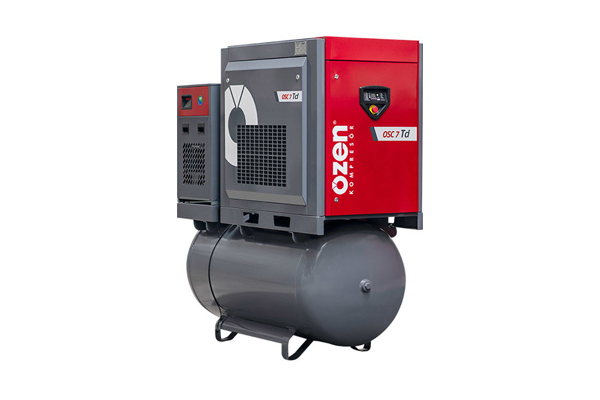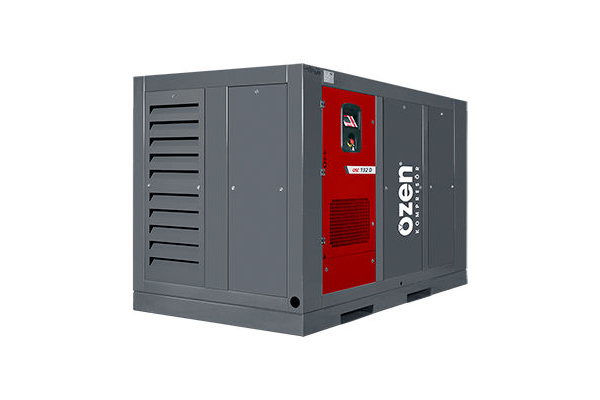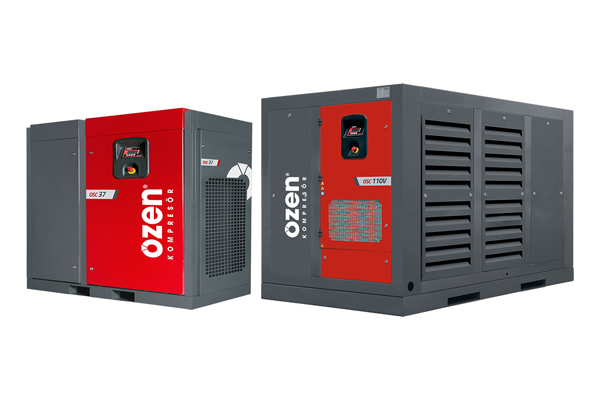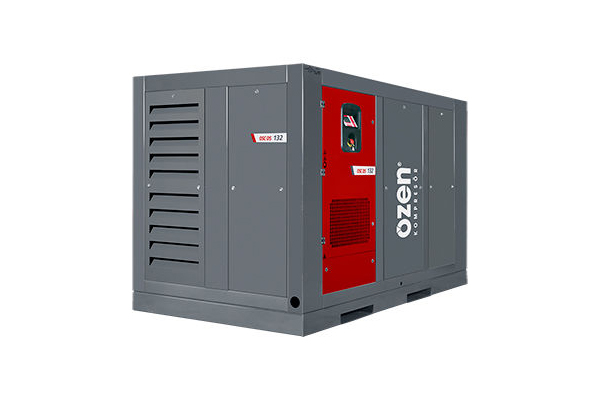Energy Recovery In The Compressor
20 August 2021, Friday

With the increase of high energy costs and environmental consciousness, businesses using compressors are worried with the regards to the potential found in these devices and the heat that is expelled without being used. The compressor removes the heat evolving during the compression process by using a fan or a water-cooled heat exchanger. By recovering 90% or more of the electricity spent in the compressor to obtain compressed air, you can save energy with less costs and relax. In the use of electricity, liquid or gas fuel in an effort to perform the heat in productions and processes, one of these methods gives its place partially or completely to the heat energy that can be obtained from the compressor and this provides you convenience. While determining the heat recovery obtained, the temperature level determines the possible usage places.
What are the Advantages of Energy Recovery in Compressor?
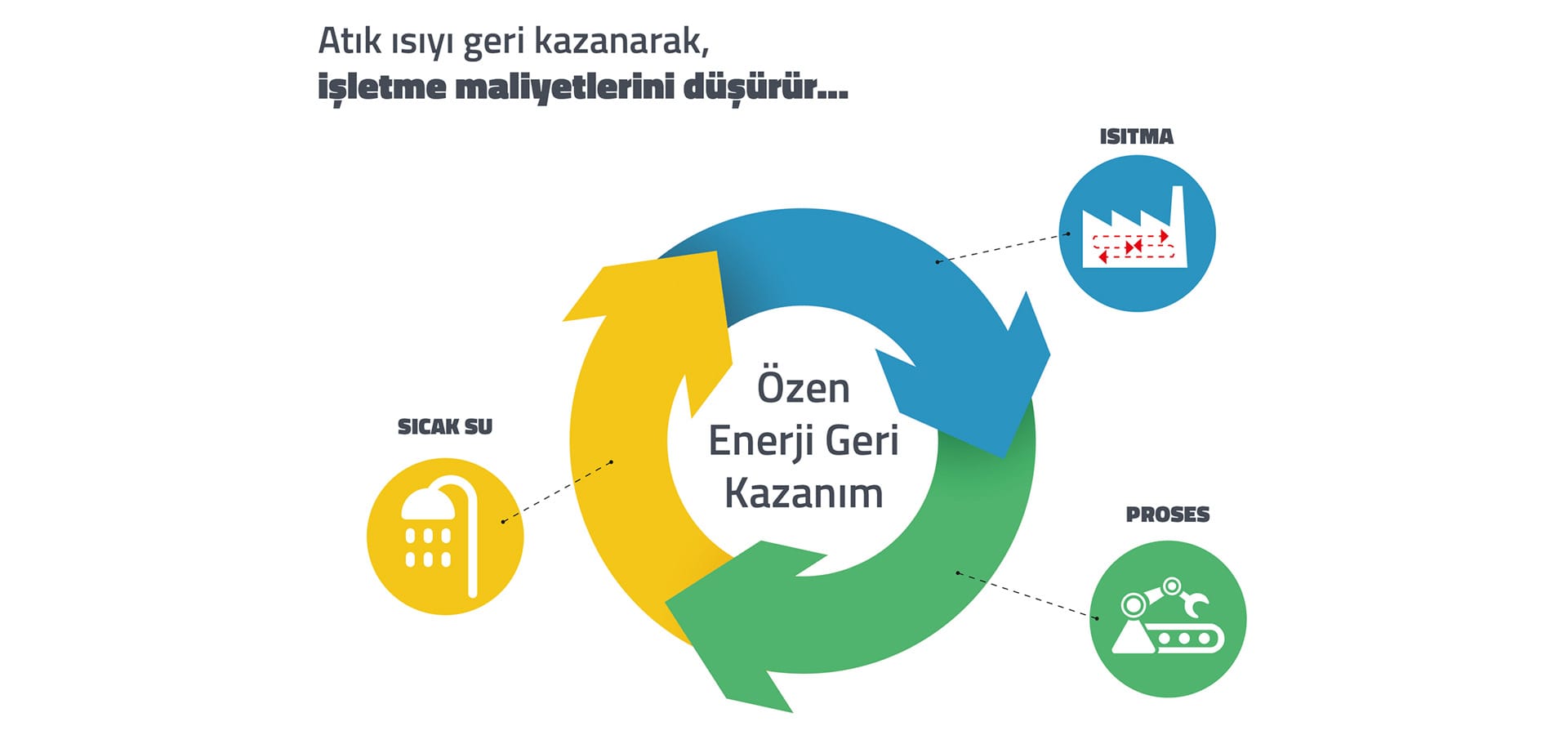
Increasing energy efficiency is among the indispensable and vital issues for all industries. 80-90% of the energy consumed by the compressor turns into useful energy. This useful energy can be used for hot water and space heating. In case of not being used, it affects the costs of the businesses negatively. At this point, the advantages of installing power saving systems can be listed as follows:
- The system installed for power saving does not affect the maintenance of the compressor and covers the investment in compressor in a short time like 1 year.
- Heat recovery not only reduces energy costs, but also contributes to the protection of the environmental. Thus, you can continue the production in your plants with peace of mind.
When air is compressed, heat occurs. The heat energy remains in the compacted volume and the excess of this heat energy is removed before the compressed air is sent to the pipeline. Many compressed air applications provide a great opportunity for power saving. While the compressed air compressed in the compressor screw is cooled by passing it through a radiator and/or exchanger, the temperature of the ambient air can be heated up to 15-25 degrees Celsius with a heat recovery system operating with 80%-90% efficiency. In this manner, while the compressor is operating at full load, an energy recovery of approximately 15 kW per hour can be achieved for ambient air drawn into the compressor at a flow rate of 200 m3/h. This is an important ratio for power saving. Thanks to the saving that may be made with this method, you can achieve a significant drop in costs.
The cost of the investment to be made in order to save energy from the heat to be expelled may be self-liquidating in a short time. As is seen, it would be redundant for you to worry about the costs of these systems. Moreover, according to some circumstances, the systems installed for heat recovery can completely meet the heating or hot water needs. So, costs are reduced. In case the amount of heat is fully used, the system may become self-liquidating in less than a year. For example, if we address an air-cooled compressor with a capacity of 55 kW and 159 lt/h, this system consumes 53.5 kW at full load. If the compressor operates for 48 hours on a weekly basis and for 52 weeks in a year, the amount of heat energy that may be recovered is 133 kWh/year. Its unit cost is 0.07 Euro. Furthermore, let's assume that electrical energy is used. So, you save approximately 9,300 Euro per year and recover from a great cost.
In addition to the gains obtained financially, the system also draws attention with its environmental friendliness. With power saving, the amount of carbonic acid gas released into the atmosphere decreases significantly. If we give an example for this, 0,21 kg(CO2)/kWh emission occurs during the combustion of natural gas. On the basis of this savings example, the calculations are as follows:
- If the heat energy of 133.530 kWh/year is used to heat the plant, the drop in carbon dioxide emissions is calculated as 133.530 x 0,21 = 28 tons of annual carbon dioxide emissions. Moreover, you will save the nature from a great burden as well.
Furthermore, thanks to the good water quality and the balanced temperature level in systems using this type of closed circuit cooling, the service life of the compressor extends and this brings additional advantages. As is seen, the advantages of the power saving systems make manufacturers happy.
Application Techniques for Different Types of Compressors
Oil-injected Screw Compressor:
- The amount of oil being injected cools the air to be compressed and is used to ensure tightness of the components of the compressor.
- More than 75% of the heat energy emerged during the compression process is taken by the oil coolers. The remaining amount is aftercooler and heating loss.
Industrial Air Compressors:
- Generally, covered production is performed in these systems. Thanks to the hot air ducts obtained, space heating is provided.
- Some units provide hot water by adding an oil/water heat exchanger to the oil cooler systems.
Water-Cooled:
- Except for the oil cooler and aftercooler, these systems are cooled by a water circuit. By using a heat exchanger, the hot water meets the Boiler feed water and process needs.
Oil-free Screw Compressors:
- Air-cooled systems generally consist of covered package units as acoustic type. Distribution is provided with the help of ducts from the hot air outlet of the heat compressor, which is obtained from the intercooler, aftercooler, and oil cooler.
- Provided that a heat exchanger is used in the circuit of water-cooled systems, the hot water meets the need of the boiler feed water or the process.
- In some models, double transitions are used on the intercoolers and aftercoolers, and 90 degrees hot water can be obtained.
- In some different models, waste heat is used, and these models are equipped with integrated chemical dryers by regeneration.
How Do We Calculate the Recovery Potential?
Almost all the energy administered to a compressor system turns into heat. The more energy is recovered and used in other processes, the higher the overall efficiency of the system. Recovered energy in kWh/year:
W=[(K1X Q1) + (K2 X Q2)] X TR
Annual savings: (€)
TR = Duration of recovered energy demand (hours/year)
K1 = TR part with the compressor operating at load (hour/year)
K2 = TR part with the compressor running at idle (hours/year)
Q1 = Available cooling waterpower (kW) with compressor operating at load
Q2 = Available cooling waterpower (kW) with the compressor running at idle
The elements affecting the result are the function of the cooling system and the distance to the consumption point as well as level of the heat requirement and continuity. When there is a high heat flow, selling the recovered energy is also an opportunity not to be ignored. The electrical energy supplier may be your customer as well, and investment, sub-orders and delivery can be negotiated with the supplier. Savings can also be made by managing the energy recovered from multiple processes.
How Do Air-Cooled Systems Provide Energy Recovery?
Energy recovery in compressed air systems may not always generate the heat you need. The amount recovered may change over time if the compressor has a variable load. In order for the recovery system to be at a sufficient level, there needs to be a corresponding balanced heat energy requirement. The most accurate way to use the heat energy you recover is to support the energy used for the system. So, the available energy is always used when using the compressor. With this cycle, you can continue your operations without thinking too much about energy costs.
Before the compressed air is distributed to the pipe system, heat energy evolves and thus waste heat occurs. All compressed air systems need to have a sufficient and safe cooling capacity in the system. The use of outside air and water mains, stream source and process water in open or closed systems takes place by the cooling process.
If we address a large industrial corporation, the compressor system, which consumes 500 kW of energy in 8000 hours per year, consumes 4,000,000 kW/h of energy annually. This is quite a large amount. It will be possible to recover large amounts of waste heat as hot air or hot water. For example, an oil-free screw compressor system can obtain water at a temperature of 90 degrees. You can enjoy reducing the costs by using this water and energy in plants. With this method, you can see that a great recovery is achieved thanks to the savings. Energy recovery systems are mostly used by Scandinavian countries, have long been utilised as a standard application and have become widespread. Mostly large suppliers can recover heat with the help of the large or medium size compressors and for these processes, standard equipment is used. So, both eco-friendly and low-cost solutions are obtained.
Özen Kompresör provides the enterprise to evaluate the heat obtained from the compressors with its energy recovery solutions. The heat that can be recovered with the integrated exchangers can be used to heat production areas or warehouses. Systems that are installed with the simple methods increase the energy efficiency and also save the business costs. With its half a century of experience and wide product portfolio, Özen Kompresör provides safe, efficient, powerful, and solid compressed air solutions to its customers. It can install these systems in a short time by providing you with the most accurate and effective power saving solutions for your plants. In order to increase energy efficiency and save on the costs of your plants, you can prefer these power saving systems, which are very simple to install. Through Özen Kompresör, you can recover from extra costs and access environmentally friendly solutions.

